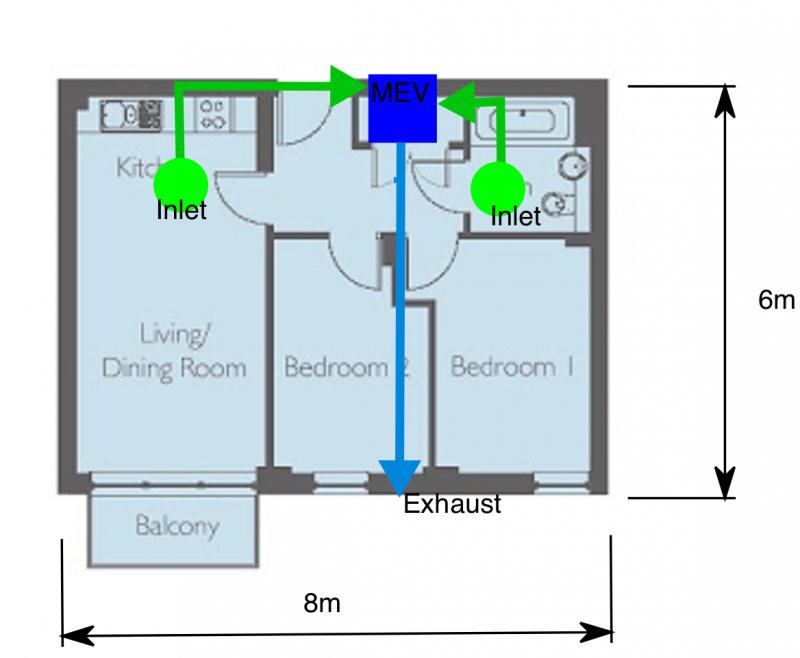Hi all,
We live in a small flat with a open plan kitchen and living area. The problem is that when cooking the room gets quite smelly, smoky and hot. We currently have a re-circulating cooker hood and also a round ceiling vent attached to a central continuous ventilation MEV (which also vents the bathroom). We've replaced the hood filters and turn on the vent boost which helps a bit but not much.
At first I thought all we had to do was install a extracting cooker hood but reading http://www.nuaire.co.uk/blog/residential/the-cookerhood-conundrum/ this seems like a bad idea. Is that right?
What other options do we have?
- Install an extracting cooker hood but have its exhaust Y'd with the MEV's vent and use a damper to avoid blowback?
- Or should we buy a more powerful MEV? Our current MEV is a Titon WCME100 which apparently has a maximum capacity of 325 m3/h.
- Or can we put another another extractor fan in-line to the Kitchen's vent to boost just the kitchen's extraction? I.e kitchen vent -> inline extractor -> MEV. Is this even possible?
- Something else??
I'd be grateful for any help.
Chu
We live in a small flat with a open plan kitchen and living area. The problem is that when cooking the room gets quite smelly, smoky and hot. We currently have a re-circulating cooker hood and also a round ceiling vent attached to a central continuous ventilation MEV (which also vents the bathroom). We've replaced the hood filters and turn on the vent boost which helps a bit but not much.
At first I thought all we had to do was install a extracting cooker hood but reading http://www.nuaire.co.uk/blog/residential/the-cookerhood-conundrum/ this seems like a bad idea. Is that right?
What other options do we have?
- Install an extracting cooker hood but have its exhaust Y'd with the MEV's vent and use a damper to avoid blowback?
- Or should we buy a more powerful MEV? Our current MEV is a Titon WCME100 which apparently has a maximum capacity of 325 m3/h.
- Or can we put another another extractor fan in-line to the Kitchen's vent to boost just the kitchen's extraction? I.e kitchen vent -> inline extractor -> MEV. Is this even possible?
- Something else??
I'd be grateful for any help.
Chu



